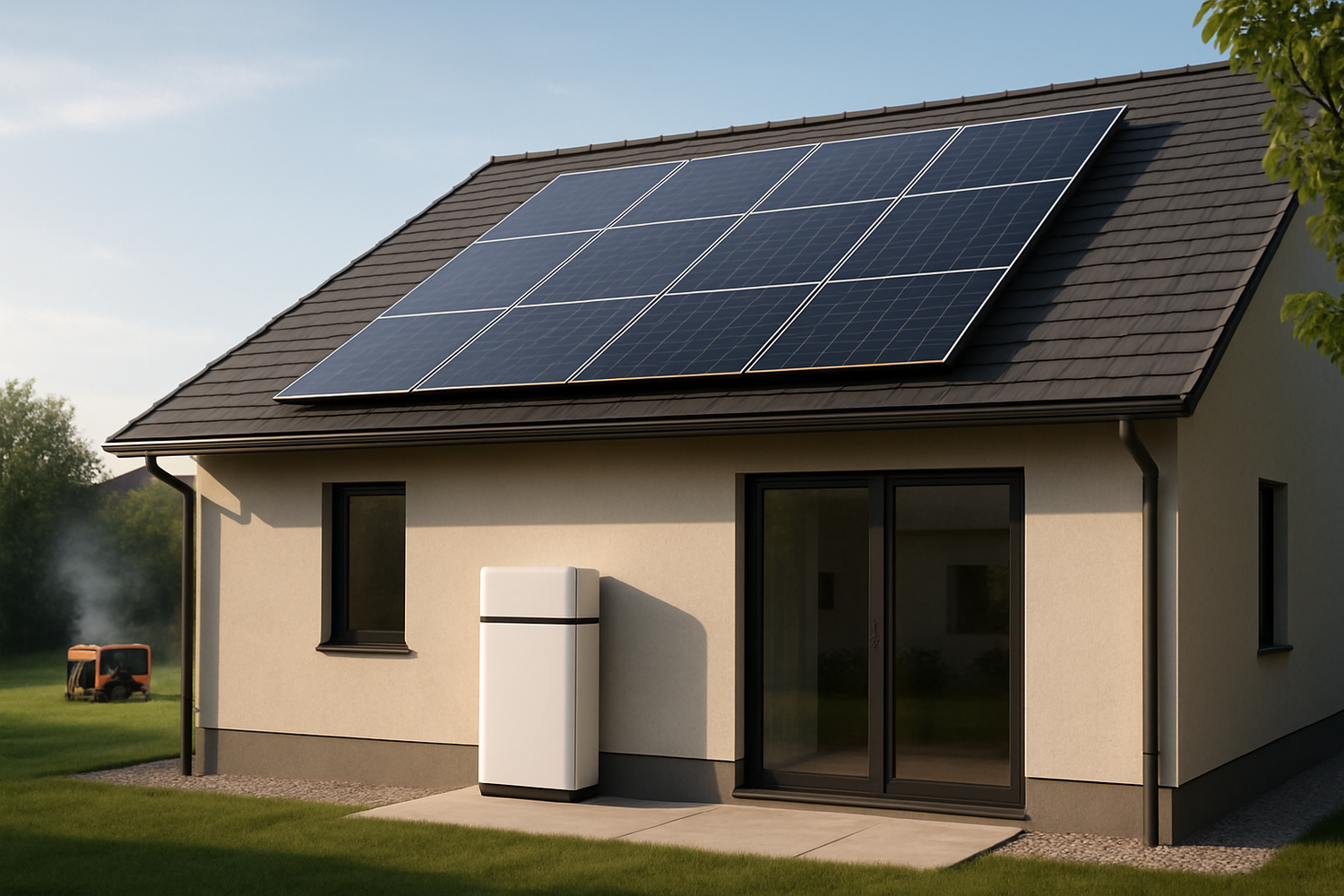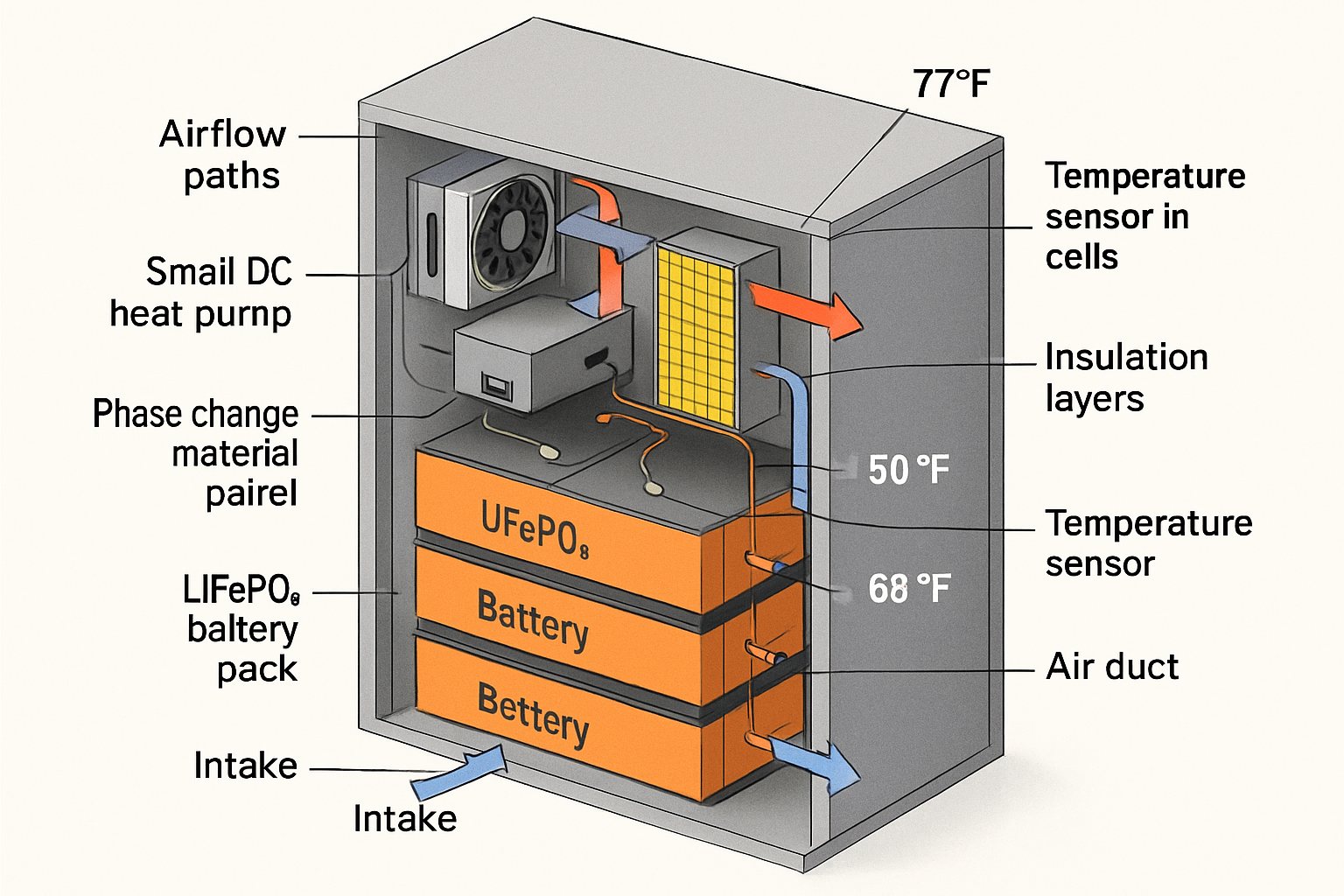Portable generators can keep lights on, but for renters they also trigger noise, emissions, and fire-safety concerns that lead to complaints or fines. Many leases and local ordinances restrict how, when, and where generators operate. By contrast, solar-plus-storage offers quiet, low-maintenance power—if you size it correctly and follow local rules. Below I map the five mistakes I see most often and the solar fixes that actually work in rentals.
1. Violating Noise Ordinances
Noise is the fastest way to draw complaints. A typical small gasoline unit is often quoted around 60–80 dB measured several meters from the source, but legal limits vary widely by city, time of day, and zoning. Nighttime “quiet hours” are common. Exceeding the local threshold or running during restricted hours can escalate from warnings to fines. Always check your city’s noise code and your lease before you start anything loud.
The Solar Fix: Silent Power with Clear Limits
Battery-based solar systems and portable power stations operate silently—no engine, no exhaust. In practice, that means fewer complaints during quiet hours. Still, “silent” does not override lease terms: balconies, common areas, and wiring modifications can be restricted. I verify limits first, then place the power station indoors and charge it by portable panels or a wall outlet as permitted. For background on why communities enforce quiet hours and health-based limits, see guidance from public-health and noise authorities such as U.S. EPA.
2. Ignoring Emission and Ventilation Rules
Combustion generators emit carbon monoxide (CO), nitrogen oxides, and particulates. CO exposure can be fatal indoors or near windows/vents. Many jurisdictions restrict where engines can run and how exhaust is routed; some properties ban them outright. Fines may apply when exhaust infiltrates neighboring units or violates air-quality rules.
The Solar Fix: No On-Site Operational Emissions
Solar-plus-storage produces electricity without on-site exhaust. That removes the CO hazard from operation and lowers the chance of air-quality violations. For health-risk context and prevention basics, consult CDC resources on carbon monoxide and safety guidance from EPA indoor air. Note: manufacturing emissions are separate from on-site operation and do not affect your lease compliance.
3. Improper Fuel Storage and Handling
Leases and fire codes typically limit the amount and placement of flammable liquids. Storing fuel in living spaces, using non-approved containers, or placing cans near ignition sources can violate code and insurance terms—sometimes with fines or eviction risk after inspection. Spills also create cleanup liability.
The Solar Fix: No Fuel, Lower Fire Risk
Solar systems remove gasoline and diesel from the equation. I still follow electrical safety: correct gauge cables, protected outlets, and clear airflow around inverters and batteries. For fire-safety context and container rules, check local fire department guidance and widely adopted model codes (e.g., NFPA codes and standards); always defer to your local authority having jurisdiction.
4. Running Outside Permitted Hours
Even a quiet generator may be limited to daytime operation by lease or ordinance. Running during quiet hours can trigger complaints regardless of measured dB. During extended outages this becomes a common citation point for renters.
The Solar Fix: Anytime Use—Subject to Capacity and Rules
With batteries, I run essentials at night without violating quiet hours. The constraint is energy, not noise: how long you can run depends on battery capacity and charging. As a quick sizing check, list essential loads (e.g., 150 W fridge average, 10 W router, 8 W LED lamp × hours). If I need 1.5 kWh overnight and want 20% reserve, I target ~1.9 kWh usable capacity and plan next-day charging by wall outlet or portable panels. Energy storage is widely recognized as a reliability tool by agencies such as the International Energy Agency, but compliance still depends on your building rules.
5. Skipping Maintenance Until Something Breaks
Engines need oil, filters, and plugs. Poor maintenance raises noise and emissions and can violate both code and lease language on nuisance or safety. Failures that damage property (soot, melted cords) can bring penalties beyond noise tickets.
The Solar Fix: Low Upkeep—But Not “Set and Forget”
Solar-plus-storage has fewer moving parts, yet I still check firmware, ventilation, cord condition, and state-of-charge practices. Keep batteries above the minimum recommended SOC, avoid over-discharge, and place equipment per the manual. For general solar guidance see U.S. Department of Energy resources.
A Brighter Energy Future (for Renters)
Silent operation, no on-site exhaust, and minimal fuel-related hazards make solar-plus-storage renter-friendly—when sized and sited correctly. I treat the lease as the first “code book,” then align with local ordinances and safety guidance. That approach has consistently reduced complaints and the risk of fines in my rental projects.
Frequently Asked Questions
What are typical noise levels for small generators?
Many portable units are cited around 60–80 dB measured several meters away, but enforcement is based on your local ordinance and the exact measurement method. Always confirm the local limit and quiet-hour window.
Can renters use solar without roof work?
Often yes. Portable panels and indoor power stations avoid permanent changes. Where roof access is required, I obtain written landlord approval and follow building rules on penetrations and load limits.
Are solar systems maintenance-free?
Lower maintenance than engines, but not zero. Expect occasional cleaning, ventilation checks, firmware updates, and battery health checks per the manual.
How long will a battery run essentials?
It depends on capacity and load. Example: 150 W fridge (8 h average = 1.2 kWh), router 10 W (10 h = 0.1 kWh), lights 24 W (5 h = 0.12 kWh) → ~1.42 kWh. With 20% reserve, target ~1.8 kWh usable or higher.
Is solar more expensive than a generator?
Upfront costs can be higher, but fuel and maintenance are lower, and you reduce the risk of nuisance or safety violations. Total cost depends on usage, local electricity rates, and any incentives.
References
- CDC – Carbon Monoxide (CO) Poisoning
- U.S. EPA – Indoor Air Quality
- NFPA – Codes and Standards
- IEA – Energy Storage
- U.S. DOE – Solar Basics
Compliance note: regulations and lease terms vary by city and building. This article is technical guidance, not legal advice. Always confirm with your landlord and local authorities.





Leave a comment
All comments are moderated before being published.
This site is protected by hCaptcha and the hCaptcha Privacy Policy and Terms of Service apply.